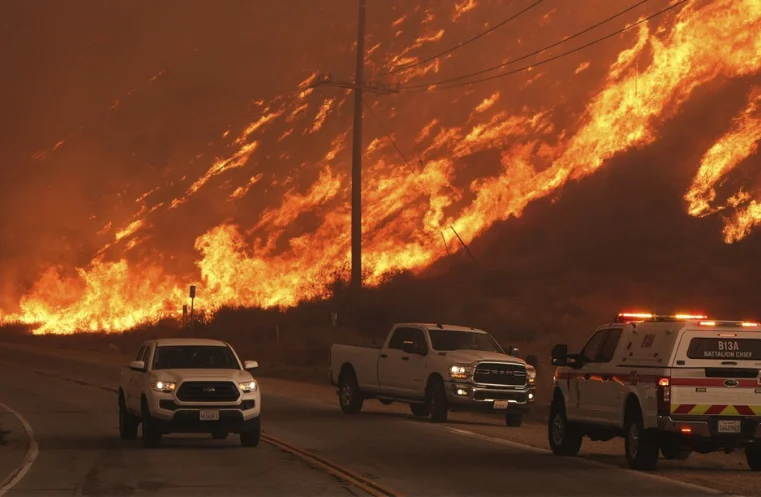Islamabad, Jan 23: In Southern California, a newly ignited wildfire swiftly escalated north of Los Angeles this Wednesday, engulfing over 9,400 acres of terrain due to fierce winds and parched conditions. This blaze, known as the Hughes Fire, has prompted the urgent evacuation of over 31,000 residents and poses a severe risk to the surrounding areas.
Located approximately 50 miles from Los Angeles, the Hughes Fire has stretched the capabilities of fire services already taxed by recent major fires within the metropolis. This latest conflagration expanded rapidly, achieving a scale two-thirds that of the notorious Eaton Fire in just hours.
Authorities have issued stark warnings to inhabitants around the Castaic Lake vicinity, highlighting the dire threat to life and property. The area remains under a red-flag warning, signaling extreme wildfire risk exacerbated by the prevailing dry, gusty conditions.
In a proactive response, Los Angeles County Sheriff Robert Luna disclosed that an additional 23,000 individuals were on alert for potential evacuation. Comprehensive measures have been enforced, including the closure of the entire 700,000-acre Angeles National Forest to mitigate further risks.
Efforts to combat the fire have been intense, with around 1,100 firefighters strategically positioned throughout Southern California in anticipation of further flare-ups. The Hughes Fire alone has seen the deployment of more than 4,000 firefighters, according to Los Angeles County Fire Chief Anthony Marrone.
The regional dry spell, persisting for nine months, has only intensified the threat, although there is a glimmer of hope with a forecast of impending rain. This expected precipitation could offer some reprieve to the exhausted firefighters.
Read More:
Starlink in Pakistan: Revolutionizing Internet Connectivity
Firefighters have used aerial tactics, with helicopters drawing water from local sources and planes dropping fire retardants over vulnerable areas. KTLA television documented the fire’s advance to the edges of water bodies.
Moreover, the Hughes Fire necessitated temporary closures along Interstate 5 through the Grapevine area due to reduced visibility from smoke, though sections have since reopened following partial containment of the fire.
This wildfire event is part of a troubling pattern of frequent, severe fires in the region, exacerbating concerns about the broader implications of climate change and urban management in fire-prone areas. As the situation unfolds, officials remain vigilant, coordinating state and local resources in a robust effort to safeguard communities and manage the ongoing crisis.









